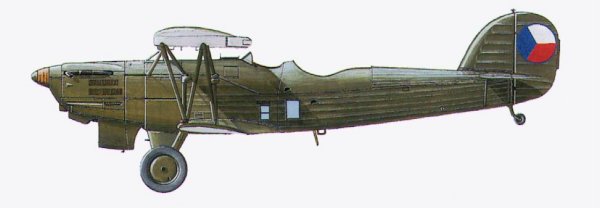
Version Ab-101:
- light bomber biplane
- origin: Czechoslovakia
- built: 1936
- wingspan/length/height: 17,00 / 12,53 / 3,90 m
- wing area: 58,50 m2
- take-off weight: 4200 kg
- range: 950 km
- ceiling: 7500 m
- powerplant ČKD-Praga HS 12 Ydrs with max. output 860 HP
- airspeed maximum: 260 km/h
- amrament: fixed synchronized machine gun vz.28 or vz.30 on the port
side of the fuselage behind the engine and moveable double machine gun
vz.30 in the second post
- ability to carry 1 x 50 kg or 4 x 25 kg of bombs in the fuselage bomb
bay, below the central part of wing and fuselage were 4 bomb racks for
50 up to 200 kg bombs and below the lower wing were 12 bomb racks for
10 up to 20 kg bombs
